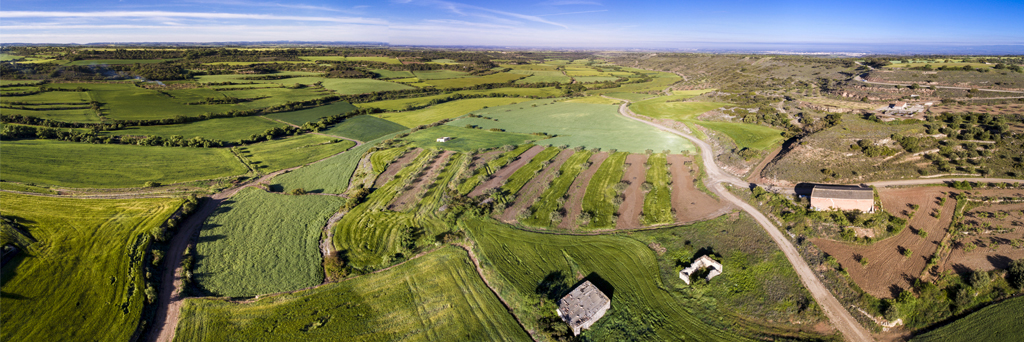The natural area of Granyena includes a combination of forests, scrubland and agricultural land that give variety and added value to its natural attributes. The landscape is dominated by the typical structure of dry grassland crops, reminiscent of the natural vegetation that originated in the most important areas along the various water courses. It is an especially interesting area for the dispersion of juvenile Bonelli's eagle, although it also hosts steppe ornithic fauna, such as the Montagu's harrier, the stone-curlew, the little bustard or the European roller. For this reason, it has been included in the Natura 2000 network exclusively as a SPAB for the conservation of birds.
It is a biogeographic region of the Mediterranean type, terrestrial lowland. Geologically, it forms part of the Catalan Central Depression, where detrital sedimentary materials (sandstone, marl and shale) predominate.
FLORA AND VEGETATION
In this area, crops dominate with fallow or abandoned areas. This agriculture is mixed with patches of forest dominated by white pine and holm oak or Valencian oak, as well as rosemary scrubland, especially on the slopes of water courses that traverse the area. In the hollows that are humid enough, there are also some isolated formations of banks, with poplars (Populus nigra).
It has 8 habitats of community interest. Halo-nitrophilois shrubby formations (Pegano-Salsoletea); maquis and garigues with Juniperus spp arborescent shrubby formations; common rushes and Mediterranean wet grasslands, including Molinio-Holoschoenion; Valencian oak (Quercus faginea) and Algerian oak (Quercus canariensis); holm-oak and oak woods; Mediterranean pine forests; Mediterranean meadows rich in annuals, Mediterranean perennial basophiles (Thero-Brachypodietalia); poplar groves, willow trees and other riparian forests.
BIRDS (ORNITHOLOGY)
It's an area of great interest for the populations of Bonelli's eagle, since it is an area of dispersion of juveniles of this species. Also to be found are some examples of stone-curlew (Burhinus oedicnemus), little bustard (Tetrax tetrax), European roller(Coracias garrulus) or calandra lark (Melanocorypha calandra).
In addition, the mosaic configuration of the area allows for a good cross-section of birds from the Catalan interior, with numerous birds of prey such as the western marsh harrier (Circus aeruginosus), the Montagu's harrier (Cirus pygargus) and the Eurasian eagle-owl (Bubo bubo). Another bird of interest is the European nightjar (Caprimulgus europaeus), the ortolan (Emberiza hortulana) and the Dartford warbler (Sylvia undata).
